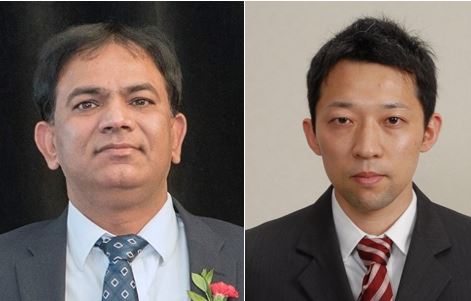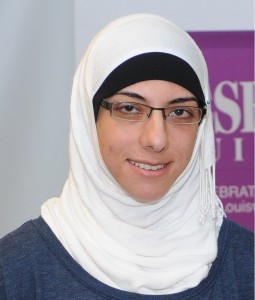
LOUISVILLE, Ky. – In today’s issue of Nature Communications, University of Louisville scientists reveal research that increases the understanding of the mechanisms regulating adult stem cells required for skeletal muscle regeneration. Sajedah M. Hindi, Ph.D., of UofL’s Department of Anatomical Sciences and Neurobiology, and Yuji Ogura, Ph.D., now of Japan, and other researchers show that the protein kinase TAK1 (transforming growth factor-ß-activated kinase 1), is vital in regulating the survival and proliferation of satellite stem cells. These cells are responsible for regenerating adult skeletal muscles in response to damage from disease or injury.
Specialized stem cells known as satellite cells reside in the skeletal muscles of adults in an inactive or quiescent state. When muscle injury occurs, a chain of signals prompts the satellite cells to awaken and generate new muscle cells to repair the injury. As part of this process, the satellite cells self-renew in order to replenish the pool of satellite cells for future muscle repair.
In the article, the authors reveal that when the protein TAK1 is reduced, satellite stem cells do not vigorously self-renew and many eventually die. Alternately, when TAK1 is increased, the satellite cells prosper. These results lead the authors to conclude that TAK1 is required for satellite cell proliferation and survival for regeneration of adult skeletal muscle.
This publication complements research published just last week in the Journal of Clinical Investigation by Hindi and Ashok Kumar, Ph.D., a professor and distinguished university scholar in UofL’s Department of Anatomical Sciences and Neurobiology, that describes the role of another protein, TRAF6 (TNF receptor-associated factor 6), in ensuring the vitality of the satellite stem cells. TAK1 and TRAF6 support distinct functions that regulate satellite cell survival and functionality. In the JCI article, Hindi and Kumar show that TRAF6 is critical for the satellite cells to retain their stem properties and prevents them from undergoing premature differentiation.
Kumar, also the corresponding author on the Nature Communications publication, believes the research in both of these publications may lead to multifaceted therapies for muscular dystrophy, cancer cachexia and other muscle-wasting conditions, including aging.
“In one disease state the muscle stem cells are undergoing premature differentiation. In that situation, TRAF6 is very important in preventing premature differentiation so the satellite cells maintain their stemness,” Kumar said. “But in some disease conditions, the overall cell population is reduced. If the cells are dying, we need to look at the protein TAK1 and if we put this protein back, determine whether it improves satellite cell survival.”

Hindi, a post-doctoral fellow at UofL, and Ogura are the primary authors of the Nature Communications publication. Ogura was a post-doctoral fellow in UofL’s Department of Anatomical Sciences and Neurobiology from 2012-2014 and now is an assistant professor at St. Marianna University School of Medicine in Japan. Co-authors include Kumar, Guangyan Xiong, Ph.D., of UofL, Shuichi Sato, Ph.D., now an assistant professor at the University of Louisiana at Lafayette, and Shizuo Akira of Japan.
Research reported in this press release was supported by the National Institute of Health grants R01AR059810, R01AR068313, and R01AG029623 to Ashok Kumar.



























